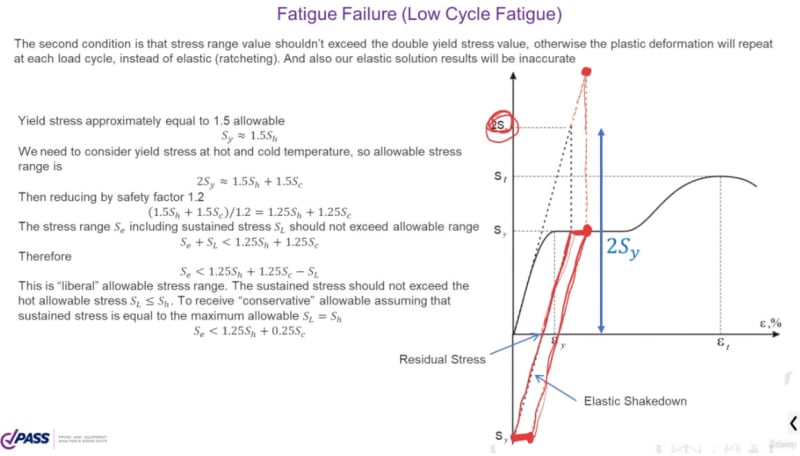Stallionbreed
Materials
- Nov 17, 2021
- 24
I was reading a thread about local plastic deformation and strain hardening effects and there were a couple of comments that I found to be confusing. Below is the link to the thread along with the two comments in question. I provide input below:
Thread:
"No. If the line does achieve some local plastic deformation from pressure reaching at or slightly SMYS, the pipe will not fail. There could be some minor plastic deformation but this does not imply the pipe will fail over time. Actually, in some cases local plastic deformation will result in stress redistribution from local strain hardening effects.
rneill (Mechanical)31 May 10 00:06"
The first part about plastic deformation doesn't mean failure is imminent because the UTS hasn't been reached. I don't understand how the stress is redistributed. It's been a while since i studied materials (chemical engineer major) but i imagine this is because the change in the shape and volume of the pipe shifts forces at different points?
"Since internal pressure is a primary stress, and since primary stresses are not self limiting, if you were to impose a pressure that caused a stress in excess of the actual yield strength of the material (as opposed to the SMYS), you could see a failure mode consisting of gross deformation leading to rupture. The material would start to yield and deform resulting in a reduction of the wall thickness leading to more deformation leading to eventual rupture. However, at the same time this was occurring there would likely be some strain hardening effects so the pipe may be able to tolerate a stress somewhat above it's yield stress before failure became inevitable.
In the event of a secondary stress (a self limiting stress) such as due to thermal expansion or settlement, local plastic deformation will relieve the stress, or redistribute it, and failure would be unlikely. Secondary stresses result in fatigue crack initiation and propagation leading to failure which requires a high number of cycles."
In this second comment i'm having a hard time understanding how the strain hardening effects on the pipe can make the pipe tolerate a stress above it's yield point even though it has yielded.
Lastly, why doesn't a self limiting stress create a failure mode?
Thread:
"No. If the line does achieve some local plastic deformation from pressure reaching at or slightly SMYS, the pipe will not fail. There could be some minor plastic deformation but this does not imply the pipe will fail over time. Actually, in some cases local plastic deformation will result in stress redistribution from local strain hardening effects.
rneill (Mechanical)31 May 10 00:06"
The first part about plastic deformation doesn't mean failure is imminent because the UTS hasn't been reached. I don't understand how the stress is redistributed. It's been a while since i studied materials (chemical engineer major) but i imagine this is because the change in the shape and volume of the pipe shifts forces at different points?
"Since internal pressure is a primary stress, and since primary stresses are not self limiting, if you were to impose a pressure that caused a stress in excess of the actual yield strength of the material (as opposed to the SMYS), you could see a failure mode consisting of gross deformation leading to rupture. The material would start to yield and deform resulting in a reduction of the wall thickness leading to more deformation leading to eventual rupture. However, at the same time this was occurring there would likely be some strain hardening effects so the pipe may be able to tolerate a stress somewhat above it's yield stress before failure became inevitable.
In the event of a secondary stress (a self limiting stress) such as due to thermal expansion or settlement, local plastic deformation will relieve the stress, or redistribute it, and failure would be unlikely. Secondary stresses result in fatigue crack initiation and propagation leading to failure which requires a high number of cycles."
In this second comment i'm having a hard time understanding how the strain hardening effects on the pipe can make the pipe tolerate a stress above it's yield point even though it has yielded.
Lastly, why doesn't a self limiting stress create a failure mode?

